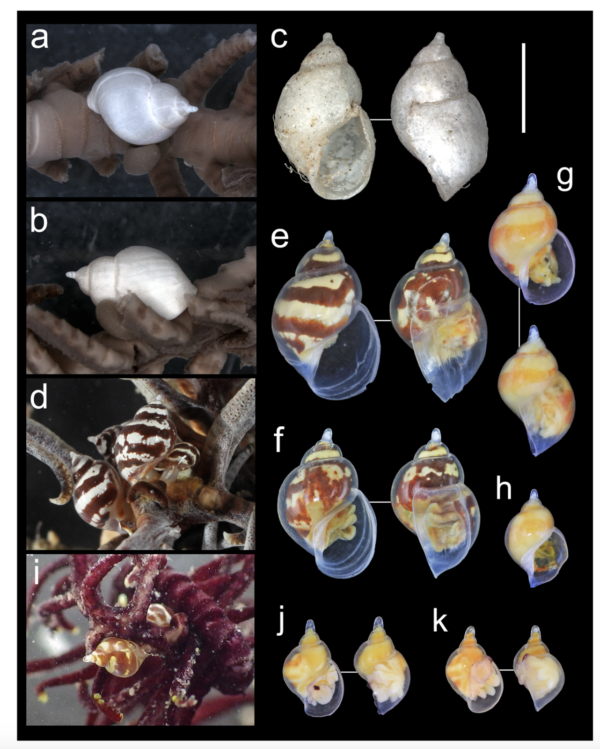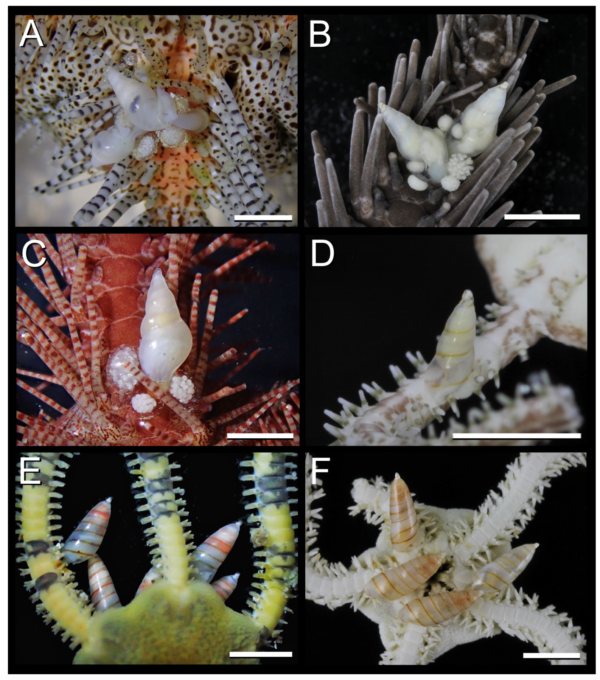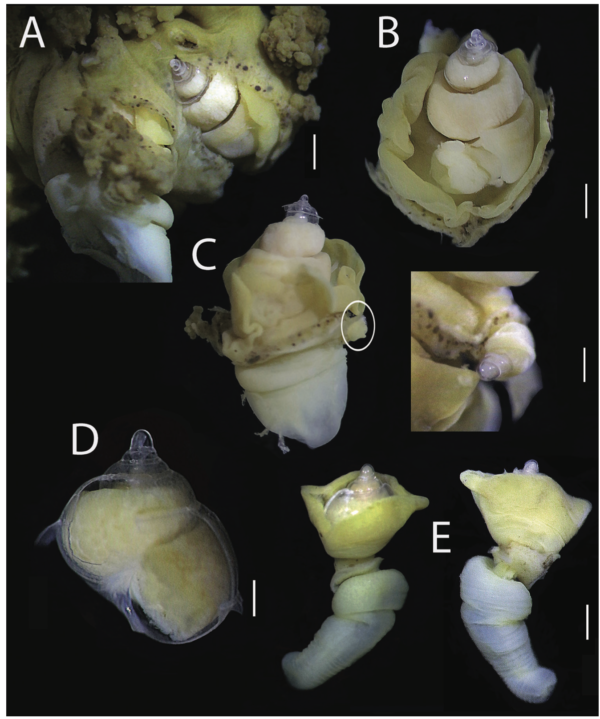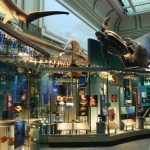In the vast realm of gastropods, there exists a group often overshadowed and sometimes even ignored: the parasites. These creatures, which I’ve enthusiastically delved into in my previous research, belong to the Ptenoglossa, a group initially classified by Gray in 1853.. The Ptenoglossa encompasses families like Cerithiopsidae, Triphoridae, Janthinidae, Epitoniidae, Aclidae, and the Eulimida, each characterized by unique traits, particularly their distinctive radulae or specialized teeth.

Among these families, the Eulimids stand out for their highly specialized nature, exclusively thriving as ectoparasites on echinoderms. Most intriguingly, they form a permanent bond with a single host, although certain species might switch hosts during their lifespan. Yet, some have evolved remarkable morphological adaptations, including anatomical reductions, to become endoparasites, particularly within sea cucumbers’ interior realms. If you catch my drift. Notably, their shell morphology varies significantly, with males typically smaller than females due to the demands of their parasitic lifestyle.

Conversely, Epitoniids, while generally considered ectoparasites, exhibit varying degrees of commensalism and predation as well. They exclusively parasitize cnidarians, such as anemones and corals, dwelling in the sediment near their hosts. These crafty creatures employ modified radulae and jaws to nip pieces off their hosts. Meanwhile, the host specificity of aclids remains a murky area within the group.
Adding to this parasitic saga, Cerithiopsidae and Triphoridae feed on sponges, adopting behaviors that could be construed as parasitic. Meanwhile, the Janthinidae, aptly nicknamed violet snails, act as parasites on various pelagic cnidarians, including the Portuguese Man-‘O-War, Porpita, and Velella.
The world of parasitic gastropods is a fascinating, complex web of interactions, where these seemingly inconspicuous creatures have evolved remarkable strategies to thrive within their host ecosystems. Understanding their adaptations not only sheds light on their evolutionary paths but also unveils the intricate connections in the diverse tapestry of marine life.

Photos from:
Dgebuadze, Polina Yu, Yury V. Deart, and Do Huu Quyet. “First record of eulimids on brittle stars from Spratly Islands.” Symbiosis 81.2 (2020): 201-205.
González-Vallejo, Norma Emilia, and Stephanie Amador-Carrillo. “Assessment of Megadenus holothuricola Rosén, 1910 (Eulimidae), an endoparasite of Holothuria mexicana Ludwig, 1875 (Holothuriidae) in the southern Gulf of Mexico and the description a new species.” ZooKeys 1016 (2021): 49.
Takano, Tsuyoshi, Hirofumi Kubo, and Masami Obuchi. “New records of associations between ectoparasitic snails of the genus Mucronalia (Caenogastropoda: Eulimidae) and their ophiuroid hosts from Japan and New Caledonia, with description of a new species.” Plankton and Benthos Research 17.3 (2022): 255-262.
Share the post "Parasites in Paradise: The Strange Case of Underwater Hitchhiking Snails"






